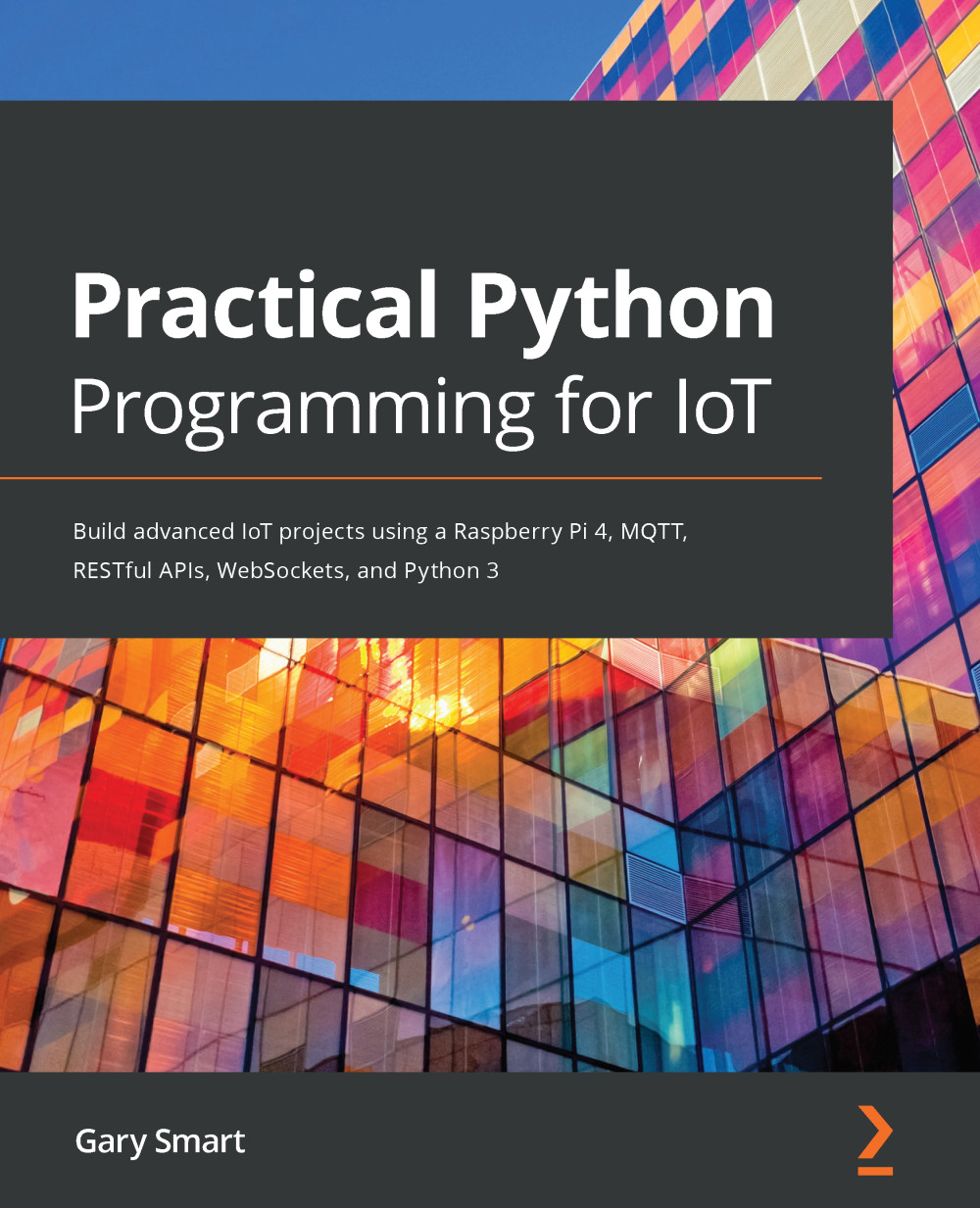You will have noticed by now that your Raspberry Pi has a lot of pins sticking out of it! Since Chapter 2, Getting Started with Python and IoT, and all subsequent chapters, we have referenced these pins by referring to them, for example, as GPIO Pin 23, but what does this mean? It's time we understand this in more detail.
There are three common ways in which a Raspberry Pi's GPIO pins may be referenced, as illustrated in Figure 5.1:

In all of the previous chapters, we've been talking about GPIO pins from the perspective of PiGPIO, which uses the Broadcom or BCM numbering scheme. BCM is the most common scheme used in Python-based GPIO libraries, and the GPIO libraries that we will discuss shortly all use BCM exclusively or by default. However, it is useful to know that other schemes exist because it will help when reading or debugging code fragments...






































































